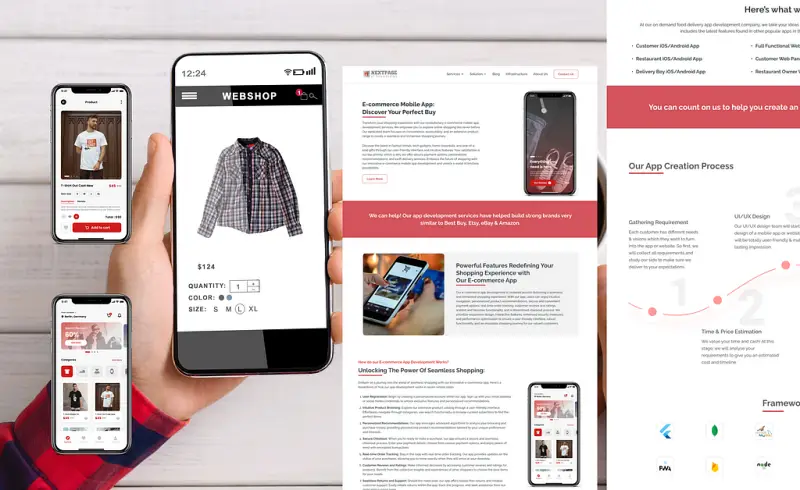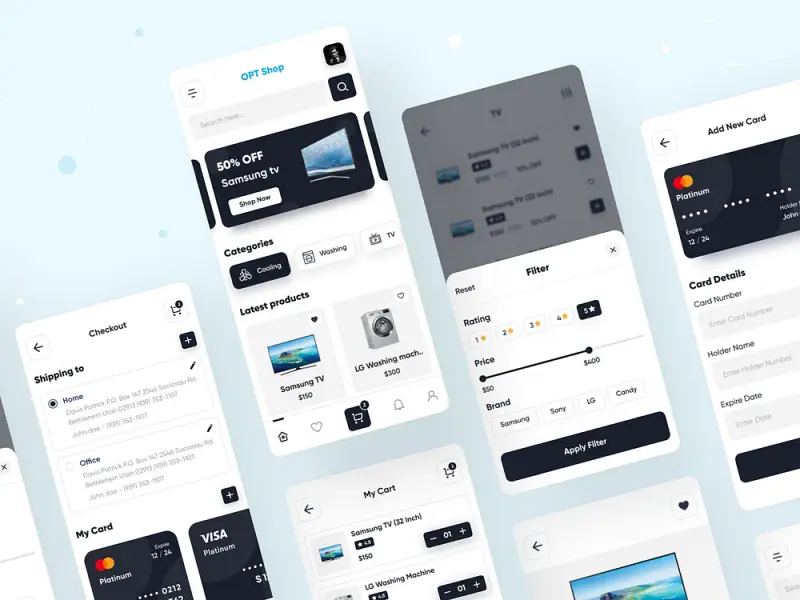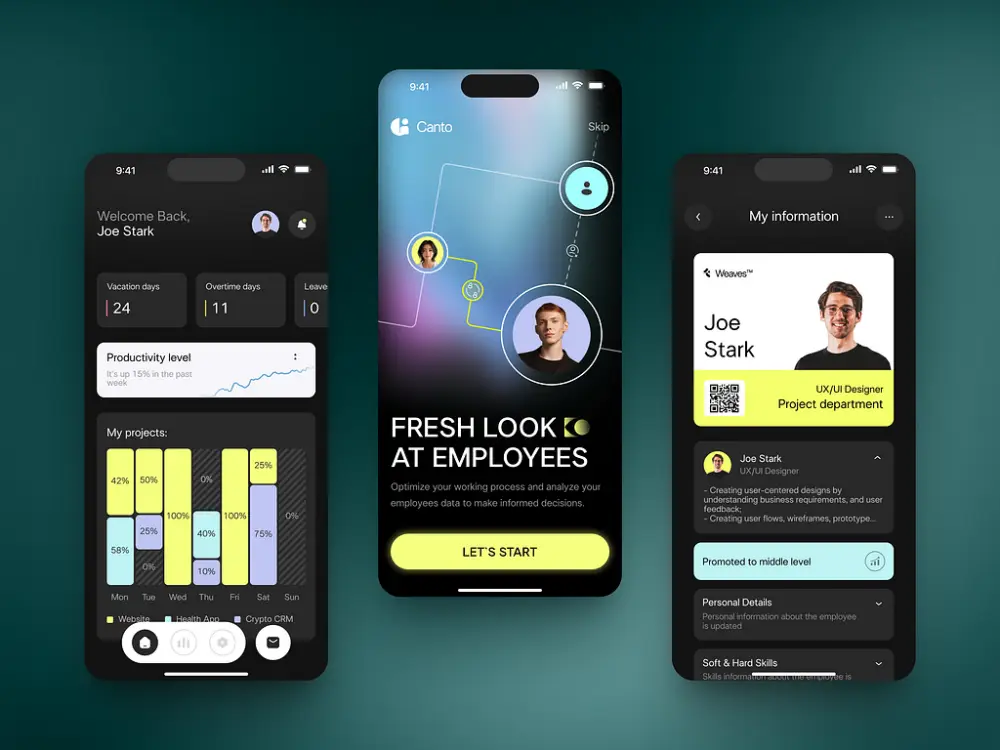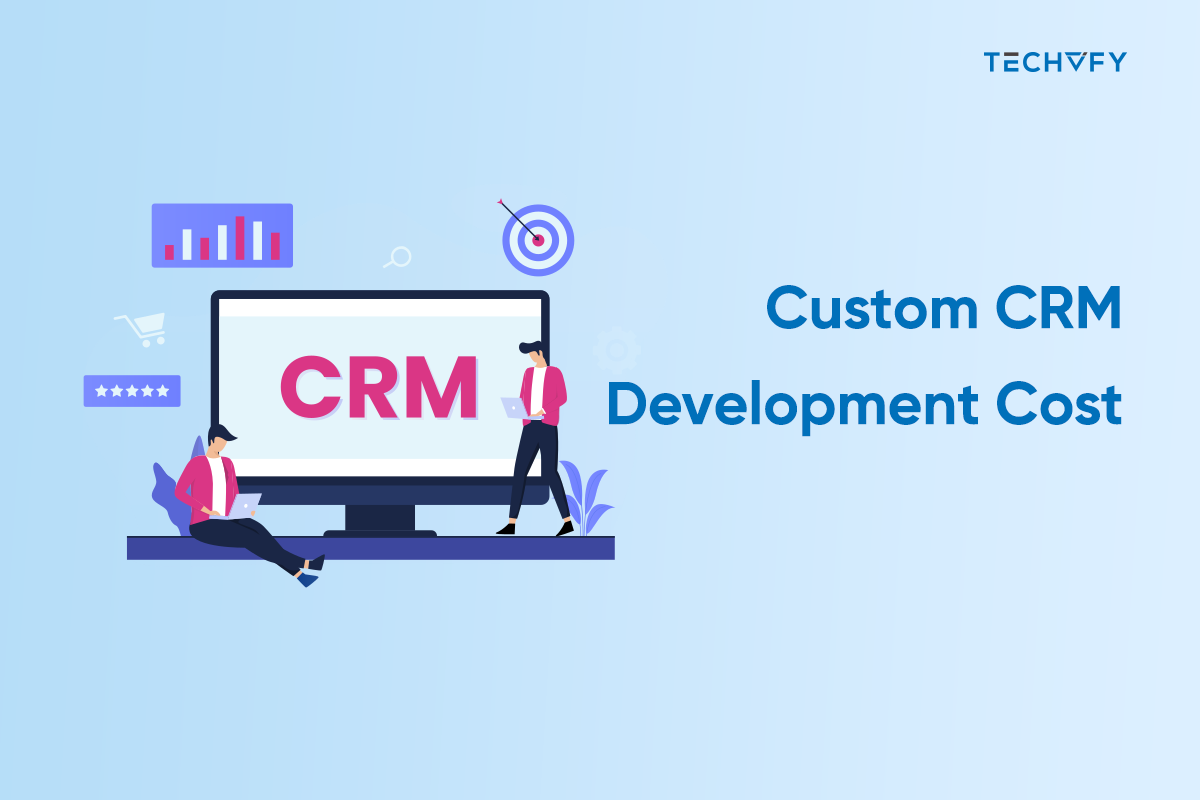Ecommerce App Development – Read This Before Building Your Next App
- TECHVIFY Team
- 0 Comments
People make many online purchases—sneakers, sunglasses, drugs, office tables, and more. The lockdown period accelerated an already growing e-commerce app development boom, making purchases through e-commerce apps the most convenient and preferred shopping method.
Capital One research forecasts that mobile eCommerce sales will surpass $7.08 trillion by 2027. With these numbers in mind, you might consider entering the eCommerce market. Or, if you’re already there, you might be looking to draw in new customers and enhance revenue. The solution is quite simple: creating an eCommerce app.
In this article, we’ll outline several steps to build an eCommerce app like Amazon, different types of eCommerce apps, and provide an approximate cost of custom eCommerce app development.
Reasons to do eCommerce App Development
The market for eCommerce apps is vast. Consider these three reasons if you are unsure about developing an eCommerce app.
Smartphone Usage
There are around 4 billion active smartphones worldwide. Most people make online purchases with just one tap on mobile devices, which alone should be a compelling reason to build a mobile commerce app.
Revenue Growth
Smartphones are more than just high-tech devices. Major eCommerce apps like Walmart and Amazon have shown that mobile apps attract new customers and boost revenue across all devices.

Changes in User Behavior After COVID-19
COVID-19 significantly accelerated the growth of eCommerce. In May 2020, total eCommerce spending reached $82.5 billion, a 77% increase from 2019. Achieving such growth would have taken 4 to 6 years based on traditional yearly increases.
Additional Benefits of Developing an eCommerce App
- Fast Access to Users: Mobile apps provide quick access to users.
- Push Notifications: Reach out to users directly through push notifications.
- User Behavior Tracking: Better options to monitor users’ behavior.
- Effective Analytics: Collect and analyze data more efficiently.
- Rapid Testing: Quickly test new features and hypotheses.
Four Types of eCommerce Applications
Here are four types of eCommerce applications:
B2B eCommerce App
Business-to-business (B2B) apps facilitate the exchange of goods, services, or information between businesses.
These apps are commonly used by manufacturers, wholesalers, distributors, and other businesses to streamline processes like supply chains and business transactions.
Notable examples of B2B eCommerce apps include LinkedIn, Quill, Shopify Plus, and Salesforce.
B2C eCommerce App
Business-to-consumer (B2C) eCommerce apps are used by businesses to deliver services and products directly to customers.
Industries that use B2C apps include retail, entertainment, and more.
Popular examples of B2C eCommerce apps include Amazon, Netflix, eBay, and Meta.
More eCommerce insights here:
C2B eCommerce App
Consumer-to-business (C2B) eCommerce apps differ from the typical B2C model. In C2B transactions, consumers provide goods or or services to other businesses in return for payment or other benefits.
A popular example of a C2B eCommerce app is Shutterstock.
C2C eCommerce App
A Consumer-to-Consumer (C2C) eCommerce app enables consumers to sell goods or services to other consumers directly. Transactions are typically facilitated by a third party, which charges a small commission fee for the service.
Popular Examples of C2C eCommerce Apps:
- eBay: A global online marketplace where individuals can purchase and sell diverse items.
- Etsy: A platform focused on handmade, vintage items, and craft supplies.
- AliExpress: A popular online retail service made up of small businesses in China and elsewhere offering products to international online buyers.
These platforms provide an efficient way for consumers to engage in transactions with each other, often benefiting from the established trust and security measures provided by the intermediary.
Looking to Build a Custom eCommerce App?
Contact TECHVIFY – Vietnam’s Leading Offshore Software Development & Outsourcing Company, for consultation and development services.
Step-by-Step Guide to Building an eCommerce App
Developing an eCommerce app requires a well-defined strategy and the right techniques to succeed in the market. Here is a step-by-step guide to help you build an eCommerce app:
Step 1: Identify the Market
Start with a clear strategy to establish a strong foundation in the eCommerce industry.
Begin by identifying the market, which includes understanding the latest trends, creating user personas, conducting competitor research, defining your target audience, setting business goals, and determining key performance indicators (KPIs).
These factors will guide you in forming a strategy to kickstart your app development journey on the right path.
Step 2: Choose the Platform
Selecting the platform for your eCommerce app development process is a critical part. You must decide whether to develop for Android or iOS or opt for a cross-platform solution.
Developing for Android and iOS separately requires more time and effort. If you seek a cost-effective option, consider a cross-platform approach.
Your choice of platform will also affect the overall development costs, so choose the platform that best targets your intended audience.

Step 3: Define Features and Functionalities
The next step is to decide on features and capabilities you plan to integrate into your app. Choosing the right features will help your app stand out from the competition.
For basic core features, consider options like easy onboarding, a user-friendly interface, secure payment modes, real-time notifications, 24/7 customer support, and review and feedback systems.
You can include IoT integration, real-time analytics, an effective CRM system, and more for advanced features.
Keep in mind that incorporating basic features will be less expensive, while advanced features will increase the costs.
Step 4: Focus on UI/UX Design
Developing an app with a user-friendly design and intuitive features is essential for attracting and retaining users. The interface should be simple to navigate, responsive, and provide a seamless user experience.
Hiring a skilled design team can help ensure that your eCommerce app has an excellent UI/UX design.
Step 5: Select the Tech Stack
Choosing the right technology is crucial for the app development process. The tech stack you select should align with your app’s specific requirements. Here are some options for a custom eCommerce application development process:
- Hybrid: Flutter, React Native
- Native: Objective-C, Swift, Kotlin
- Frontend: React JS, Angular
- Backend: Node JS, Java, PHP, .NET, Python, TypeScript
Remember that a basic tech stack will be less expensive than a more advanced one.
Step 6: Development
In the development stage, developers start coding, working on both front-end and back-end development. They integrate all the features and functionalities planned in previous stages.
This stage is critical as it determines the app’s performance and functionality. The time required can vary depending on the app’s complexity.
Step 7: Testing and Launch
After development, the next phase is testing and launching the app.
Your eCommerce app undergoes both automated and manual tests during testing. This ensures the app functions smoothly, has robust security, and is free from errors, bugs, or performance issues.
Once testing is complete, the app is set for release on the Google Play Store or Apple App Store.
Key Considerations Before Developing a Mobile eCommerce App
Developing an eCommerce app comes with specific challenges that need attention. Here are three important factors to consider:
Data Security
When users sign in to your eCommerce app, they provide personal information such as their home address, credit card number, and phone number. It is crucial to protect this data to maintain user trust. Here are some steps you can take:
- Use a Private Cloud: Ensure your cloud provider offers a private cloud regime to store user information securely.
- Define Access Rules: Restrict access to certain services based on user subscriptions, such as premium accounts.
- Alarm System: Implement a system to quickly alert you to any security threats, allowing you to respond promptly and minimize potential damage.
Scalability
Your app must be scalable to accommodate an increasing number of users. Although it might seem unnecessary to consider scalability at the beginning of the development process, it’s essential to forecast your app’s growth and plan the architecture accordingly. This foresight ensures that your app can handle future demands without significant overhauls.

Stability
An unstable app with frequent crashes can severely impact user satisfaction and retention. To ensure stability and deliver a consistent user experience, you should:
- Run QA Tests: Regularly perform quality assurance tests to identify and fix bugs.
- Make Several Product Iterations: Continuously improve the app through iterative development.
- Get Feedback from Users: Actively seek and incorporate user feedback to address issues and enhance functionality.
- Release Fixed Updates: Regularly update the app with bug fixes and performance improvements.
How Much Does it Cost for eCommerce App Development?
The cost of developing an eCommerce app is influenced by various factors, including the project’s complexity, the features offered, functionalities, UI/UX design, tech stack, and more. Here’s a custom eCommerce application development price range so you can be prepared for your next project:
Basic eCommerce App
- Freelancers: $5,000 – $10,000
- Local Development Agencies: $10,000 – $20,000
- Reputed Agencies: $20,000 – $30,000
Advanced eCommerce App
- Freelancers: $15,000 – $25,000
- Local Development Agencies: $25,000 – $50,000
- Reputed Agencies: $50,000 – $100,000+
If you plan to develop your eCommerce app starting with a Minimum Viable Product (MVP), focus on integrating essential features that will benefit users. This strategy enables you to release your app to the market and collect user feedback for further enhancements.
After analyzing the market and collecting feedback, you can develop a fully-fledged eCommerce app with advanced features and maximum efficiency. At this stage, consider reaching out to investors who can help you scale your app to an advanced level.
Conclusion
Whether you’re new to the market or looking to enhance your existing platform, developing a custom eCommerce app can significantly boost your business.
Creating an eCommerce app requires careful planning and execution, from market research to design, development, and launch. Ensuring data security, scalability, and app stability will help you deliver a top-notch user experience and build trust with your customers.
Don’t just keep up—lead the way! Partner with TECHVIFY for a custom eCommerce app that meets your needs and exceeds your expectations. Our expert team is here to turn your vision into reality and propel your business to new heights.
TECHVIFY – Global AI & Software Solution Company
From Startups to Industry Leaders: TECHVIFY prioritizes results, not just deliverables. Accelerate your time to market and see ROI early with high-performing teams, AI (including GenAI) Software Solutions, and ODC (Offshore Development Center) services.
- Email: [email protected]
- Phone: (+84)24.77762.666





